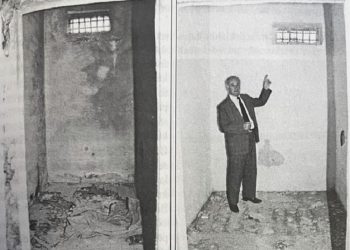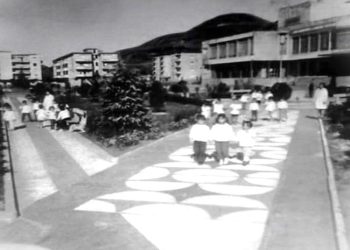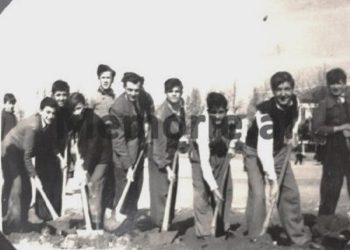Memorie.al publishes unknown US CIA documents about Heinrich Müller, head of Hitler’s Nazi Gestapo, who is said to have been abducted by the Soviets after 1945 and sent to Moscow, where he served for years in the KGB. in Stalin’s Russian. According to the American secret services, in 1956, Myleri came to Albania and for years was put in the service of the State Security, under the false name of Abedin Beqiri, which is also confirmed by some former senior members of the Security of state …?!
In 1945, shortly after the end of World War II, under an agreement reached between the three Great Powers: the United States, Britain and the Soviet Union, the secret services of these countries, in cooperation with those of other states that emerged victorious from it war, began the pursuit, detection and arrest of all those persons charged with war crimes. In this context, the International War Crimes Tribunal was set up and functioned, which became known with the famous Nuremberg trial, where a part of the high exponents of the Nazi dome of Adolf Hitler, who had war crimes. But in the dock of that trial were also missing many former senior officers of Hitler’s Staff, who at the end of the war had been able to escape and then hide, escaping trial. One of them was Heinrich Müller, the head of the Nazi Gestapo, who is said to have been in the bunker of the Reisch Chancellery until the last moment when Soviet soldiers entered. There he lost track of himself. It is said that at the moment when Russian soldiers were taking control of Hitler’s last lair, Müller was abducted by the Russian KGB and then sent to Stalin’s Soviet Union, where he served for years in official Moscow and Russian intelligence. led by Lavrentiy Beria. From 1945 onwards, dozens of versions of Miller’s fate have been written, sometimes contradictory. From some evidence of the American CIA, it is known that in 1956, Myleri also came to Albania, where for years he served the State Security of the communist regime of Enver Hoxha.
Heinrich Myler was born on April 28, 1900. In World War I he served as chief of the Munich police, where he soon became known as an anti-communist. In 1923, Heinrich and Gering founded the German State Secret Police, known as GESTAPO for short. Afterwards, Müller participated as an effective in the ranks of the RSHA (Reich Security Office), where he served as a leader in its governing bodies, until September 1939, when Germany invaded Poland. With the assassination of Heinrich in Czechoslovakia in 1942, Müller was appointed head of the Gestapo, and at that time he began persecuting German communist elements, Jews and Russian captives, who were executed in concentration camps. In October 1944, at Hitler’s proposal, Miller was decorated with the Iron Cross as a reward for suppressing the anti-Hitler coup that took place in July 1944. One of the most famous successes of Nazi Germany’s intelligence services. , at the time it was led by Myler, was the annihilation of the organization “Red Orchestra” and the receipt of information by Soviet espionage, during the period of World War II.
After the end of the war, in 1945, Miller and his close friend Walter Schellenberg were made available to Moscow’s secret services and worked for Stalin’s Soviet Union. From 1946 to 1963, Miller worked for the secret services of the Soviet Union, Czechoslovakia, and Argentina. On several occasions, Miller provided information to the Russian KGB about American bases based in West Germany. In 1963, Miller fled to Cuba and then to Argentina, then led by President Juan Per Presidentn. There is another version of Müller’s disappearance, given by Czech communist leader Rudolf Barak, which shows that KGB agents abducted Müller from Argentina and sent him to a Soviet prison with several other Germans. Another version of Müller is given by Alois Brunner (commander of a Jewish concentration camp in France), who wrote that Müller took refuge in Syria and that he (Müller) was not guilty of the “solution”. final of the problem of the Jews. Other testimonies about Myler are also given by Marvin Hier, the founder of the Simon Wiesenthal Holocaust Center in Los Angeles, who testified: “Myler has never been tried for what he did during the war and we have no understand nothing”. In 1946, US military intelligence revealed that after the war, Miller had committed suicide along with his wife and three children. According to the CIA, Miller and Eichman (his accomplice in the war crimes), stayed in an underground tunnel in Berlin, from where they later went underground illegally under false names. Eichman was arrested in 1960 by Israeli intelligence agents (Mossad) and killed by them in Jerusalem, while Miller fled to Russia and then to Latin America.
The first search for the Gestapo Myler
Following the entry of Anglo-American troops into Berlin, the British counterintelligence services, in collaboration with the American counterintelligence, began to draw up a detailed plan down to the arrest and trial of Nazi war criminals. In their plans and lists, the most important was Heinrich Müller, along with Schellenberg, Ohlendrof, Steimle, and Sanderberger, who after the war had disappeared, or played a double game with the foreign agencies of the communist countries of the East, as p. sh., with the KGB of the Soviet Union, in the case of Miller. On August 22, 1945, US intelligence believed that they had arrested Heinrich Myler, but it turned out to be a misinformation, as they had arrested Walter Huppenkothen, the persecutor of the “Red Orchestra” and not his boss (Myler). A later revelation made by George Blake, Harry Hungton and Heinz Felfe, shows that according to the testimony of Mikail Golinevski (Polish intelligence chief until 1958), from 1948 to 1958, from information gathered about criminals of the war, it turns out that Miller was staying in Moscow with the help of the KGB. The same information is given by Jakobs Loegles (former head of the Gdansk Gestapo in Poland), who later served and worked for the BND (Intelligence Service of the Federal Republic of Germany).
End of the War and Myler
In the final year of the War, Heinrich Myler still believed in the victory of Nazism. At that time, he collaborated with German counterintelligence officers and in December 1944, in the Ardennes forest they reaped a temporary success against the Americans. During this time, his agents played a double game with the Soviets. A considerable number of Miller’s agents returned to the Soviets after the war, as evidenced by Walter Schellenberg (former head of RASH) when he said: “Miller had told the Russians on the radio that Stalin was a superior leader. see Hitler”. But according to a revelation from CIA agents and the testimony of Heinz Pannwitz (Gestapo secretary), it is known that Miller absolutely never said such a thing, and that he had ordered the liquidation of the “Red Orchestra” (Soviet espionage body).
Hypothesis about Miller’s death
After the war, German authorities hired three former Nazi majors to prove Miller’s death. From the testimony of the first major named Fritz Leopold (former officer in the Berlin morgue), it is known that the lifeless body of Miller was exhumed from the morgue by some SS officers (RSHA staff) on the street ” Prince Albert ”(2 km from the Chancellery of Reisch) and is buried west of the city. But later this statement of theirs was refuted, because at that time and in that place, it turned out that another man had been buried, eight years younger than Müller. The second testimony comes from Heinz Pannwitz (RSHA employee), who showed that Miller surrendered to the Soviets and in 1957 he worked for the BVD). But he stressed that during the end of the War Myleri was trapped in the Chancellery tunnel and that only his head and identification documents were found. The third testimony comes from Walter Luders (Volkshturm recruit), who shows that during the last days in the Reisch Chancellery garden, among dozens of ordinary corpses, there was also a corpse in whose dress the medals and ranks of a senior SS officer. The body, which was thought to belong to Miller, was later moved to the “Old Jewish Square” in the Soviet sector, where it later disappeared under unclear circumstances. In 1955, the German Army Information Office claims that ten years ago, on Grasen-Hamburgerstrasse, Miller’s body was buried there. But the allegations and information were incomplete. They were never mentioned in the Allied dossier on Myler. From some other CIA data, regarding Miller’s activity, it is known that after the war he took refuge in South Africa, Romania, Turkey, the Soviet Union, Argentina and later in Albania. In Albania he was taken under the protection of the communist employees of the official Tirana State Security, who kept him hidden under the false name: Abedin Beqir Nikoshir. But the KGB, where Myleri is said to have worked, has also released its own version. According to Moscow, Miller died in Berlin in May 1945.
In 1965, “Zeri I Popullit” denied Myler’s accommodation in Albania
The various versions and evidence of a possible refuge in Enver Hoxha’s communist Albania for the former head of the Nazi Gestapo Adolf Hitler, Heinrich Myler, are not entirely unknown. Some former senior officials of the Albanian State Security, who before the ’90s served in some representations and embassies of our country (accredited mainly in the West), camouflaged under the guise of a diplomat, have testified confidentially for Memorie.al that the “Myler case” is not unknown and new to them. According to them, in 1956, when Khrushchev was undertaking the de-Stalinization of the Soviet Union, fanatical KGB circles removed Myler from Moscow and brought him to Albania, seeing our country as safer and more closed to the world. According to them, it is said that Myleri was kept for years under strict security measures in one of the rooms of the building of the Albanian Intelligence Directorate (inside the Palace of Brigades), which he served for years. Only Enver Hoxha, Mehmet Shehu, Hysni Kapo and Kadri Hazbiu knew about Myler’s real identity and his location in Tirana. This secret was maintained until the early 1960s, when Albania severed ties with the Soviet Union. Since then, several Western countries have repeatedly demanded that official Tirana hand over the former head of the Nazi Gestapo, Adolf Hitler. According to the testimony of one of our former diplomats in the West, around 1965, almost every day near the Albanian embassy in Vienna (where Mehmet Çaka was serving as ambassador at the time), letters of protest were handed out asking the Tirana government to hand over Myler.. Based on this, through the Albanian Telegraphic Agency (ATSH), official Tirana denied the news that Myleri was sheltering in Albania. The short refutation of ATSH, at that time was published in a few lines by the newspaper “Zeri I Popullit”, a body of the Central Committee of the ALP. But the traces of Miller are not lost in Albania, as it is said that shortly before the break with the Chinese, he was taken by them and ended up in the People’s Republic of China, from where it is no longer known how his fate went…? /Memorie.al





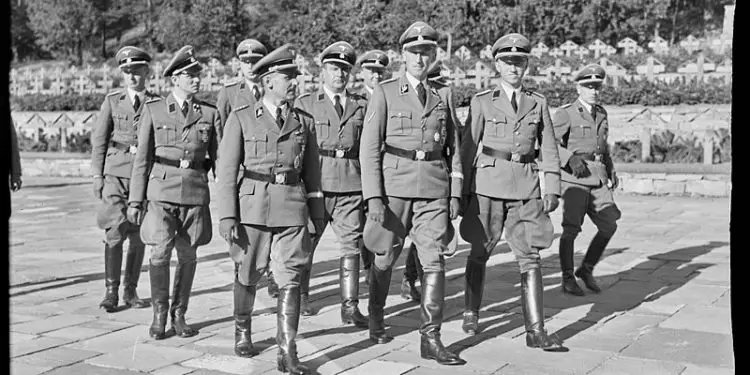

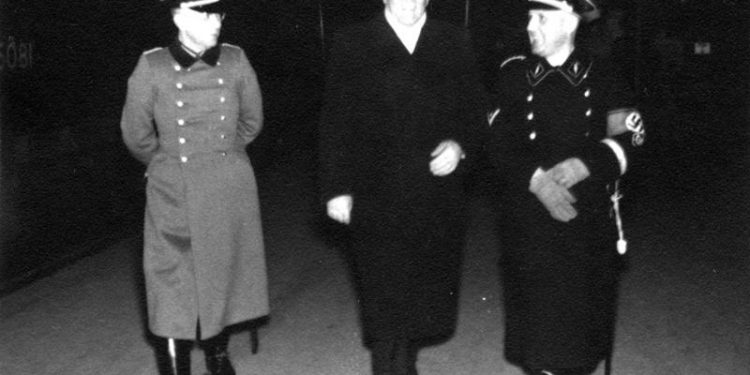
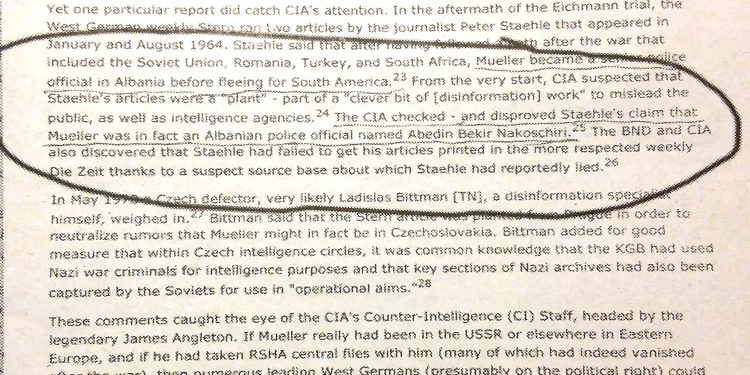

![“After the ’90s, when I was Chief of Personnel at the Berat Police Station, my colleague I.S. told me how they had once eavesdropped on me at the Malinati spring, where I had said about Enver [Hoxha]…”/ The testimony of the former political prisoner.](https://memorie.al/wp-content/uploads/2024/09/admin-ajax-4-350x250.jpg)

